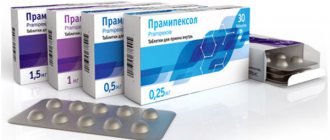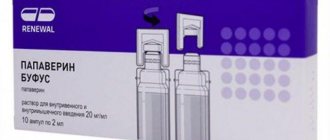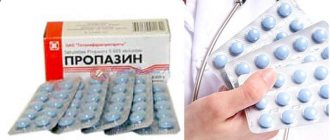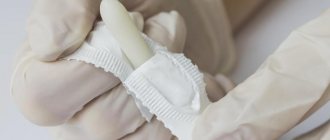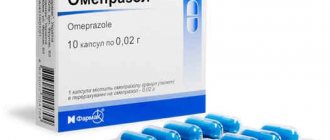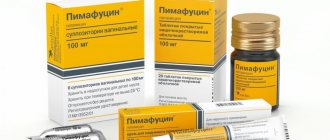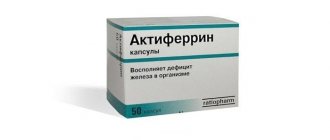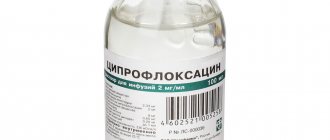Papaverine is an antispasmodic drug that is actively used to reduce the contractile function of smooth muscle fibers and reduce muscle tone, which leads to rapid relaxation of smooth muscles. It is a derivative of opioid alkaloids and is produced by synthesis.
Prescribed to eliminate spasms of the biliary tract, ureters, gastrointestinal tract, and decrease the tone of the uterus. It is used as a vasodilator for the coronary circulatory system for subarachnoid hemorrhages and coronary bypass surgery, as well as in a number of other cases.
Pharmaceutical group: myotropic antispasmodics.
Active substance
Papaverine is an alkaloid of the opium poppy. Despite the fact that the medicine is produced from poppy straw, it is not a narcotic drug. Papaverine injections are prescribed to combat muscle hypertonicity in various body systems, including the gastrointestinal tract, respiratory, cardiovascular and genitourinary systems.
“Papaverine” is both the trade name of the drug and the international name of the active ingredient. Papaverine hydrochloride is an active substance that helps dilate arteries and accelerate blood flow. This drug is often used to lower blood pressure, since the drug has a pronounced hypotensive effect.
The medicine quickly enters the blood: Papaverine reaches the site of its main effect in 20-30 minutes, while its concentration is evenly distributed throughout the body. The active component is broken down in the liver, which eliminates the possibility of accumulation of the substance with repeated use. The antispasmodic leaves the body with urine.
Composition and mechanism of action
Each ampoule (2 ml) contains a 2% injection solution containing papaverine hydrochloride (20 mg/1 ml), with the addition of the following ingredients: D, L-methionine, disodium edetate, water for injection.
Papaverine in ampoules is packaged in cardboard packages in quantities of 5 and 10 pieces.
Treatment with Papaverine helps to relax smooth muscles in organs and blood vessels, reduce their tone, dilate arteries, which improves blood flow, including cerebral, and leads to a decrease in blood pressure.
The injection solution has a relaxing, but not paralyzing, effect with complete preservation of muscle movements.
The drug inhibits the enzyme phosphodiesterase (PDE), resulting in the accumulation of cyclic mononucleotides (cAMP) in cells. As a result of this process, calcium ions leave the cells and the contractile activity of muscle fibers decreases.
Injections of the drug in large dosages help slow intracardiac conduction and reduce the excitability of the heart muscle. This property of the drug gives it a sedative effect.
The therapeutic effect of the drug when administered intramuscularly occurs after approximately 20 minutes. after injection and lasts about 5 hours. Papaverine is excreted through the kidneys.
Who is prescribed
This medicine is available not only in injections. "Papaverine" is sold in tablets and in the form of rectal suppositories. Indications for use of the drug, regardless of the release form, do not change. The active substance is absorbed into the patient’s blood in exactly the same way and has a systemic therapeutic effect.
In the majority of cases, “Papaverine” is prescribed for the complex treatment of diseases and conditions such as endarteritis, bronchospasm, pylorospasm, cholecystitis, angina pectoris and spastic colitis. It is recommended to use this medication:
- in order to prevent spasms of muscle tissue of the smooth structure of internal organs - we are talking about inflammation of the gallbladder, irritable bowel syndrome, spasms of the stomach, respiratory organs;
- for relief of acute pain syndrome in renal and hepatic colic;
- for systemic therapy of impotence, erectile dysfunction against the background of diseases of the small organs, disorders of vascular etiology;
- to eliminate spasms in vascular pathologies accompanied by involuntary contraction of the arteries of the brain, upper and lower extremities.
Sometimes Papaverine injections are given to patients before surgery. The drug is used as an additive that helps prepare the patient for the introduction of anesthesia - to reduce the degree of anxiety and enhance the effect of anesthesia.
Indications
- spasms of smooth muscles;
- spasms of the gastrointestinal tract due to cholecystitis, spastic colitis;
- pylorospasm;
- renal colic;
- peripheral vascular spasms;
- spasms of central nervous system vessels;
- spasms of heart vessels against the background of angina pectoris and hypertensive crisis (as part of complex treatment);
- urinary retention due to urinary tract spasm;
- bronchospasm.
Prescribed as an auxiliary drug for premedication before surgical interventions on the gastrointestinal tract, proctological and urological procedures.
Instructions for the use of "Papaverine" in injections
The drug, produced in ampoules, is a sterile solution of papaverine hydrochloride 2%, ready for parenteral administration. Each 2 ml ampoule contains 40 mg of active substance - this amount is equivalent to a single dose for an adult. The same amount of papaverine hydrochloride is contained in the tablet.
When using a whole undiluted solution, the drug can only be administered subcutaneously or intramuscularly. After dilution, it is allowed to give an intravenous injection of Papaverine. The dosage depends on the patient's age:
- adults and adolescent children can be given no more than 2 ml of medication at a time, with the maximum daily dose being 4-8 ml;
- children 7-10 years old are allowed to give 0.5-0.75 ml of the drug no more than twice a day;
- babies from six months to two years – 0.25 solution up to four times a day;
- children 2-4 years old - up to 0.5 ml of medication twice a day;
- children from 4-7 years old - 0.5 ml no more than two times.
How to use papaverine injections?
First of all, you should check the quality of the medicine. In addition to the date of manufacture and expiration date, it is necessary to pay attention to the physicochemical properties of a particular dosage form. Papaverine hydrochloride is a white crystalline powder that is odorless and slightly bitter in taste. More necessary data is contained in the pharmacopoeia. Usually sold in the form of tablets, rectal suppositories or ampoules in dissolved form.
For intravenous injections, it must be diluted in 10-20 ml of physiological solution. It is administered intramuscularly in its original form. The exact dosage is usually prescribed by a doctor, it depends on the patient’s condition and the specific disease.
The average single dose for adults contains about 0.1 g; no more than 0.3 g can be injected per day. No more than 2 injections are allowed during the day to avoid overdose. To relieve a hypertensive crisis, 1-2 ml of a 2% solution is administered intramuscularly. More often, to treat this condition, Papaverine is combined with Dibazol.
In pharmacies, Papaverine is available only with a prescription.
Injection technique
When administering subcutaneously or intramuscularly, you first need to decide on the injection site. How to give Papaverine injections? In this case, the technique is practically no different from the parenteral administration of other drugs. The best place for intramuscular injection is considered to be the superolateral outer surface of the thigh or the upper outer part of the shoulder, and for the subcutaneous injection - the periumbilical area.
Before entering the tissue with a needle, the skin around the injection site must be treated with an antiseptic. Then the required amount of “Papaverine” is drawn into the syringe and injected intramuscularly into the prepared area. It is important that the needle goes deep into the tissue, forming a right angle with the surface of the skin.
If there is a need to perform a subcutaneous injection of Papaverine, then the injection should be done differently. First, you need to grab approximately 1 cm of the skin fold with two fingers, then place the syringe at an angle of 45 degrees to the surface of the epidermis and inject the solution into the fold. As soon as all the medicine has been administered, the needle is carefully removed and a cotton pad with an antiseptic is tightly applied to the injection site. If multiple injections of the solution are necessary, with each subsequent injection you should deviate from the previous injection marks by 1-2 cm.
For intravenous infusion, the drug is diluted in the required amount with sodium chloride solution, then the resulting mixture is slowly injected into a vein in the arm. It is advisable to carry out such injections within the walls of a hospital hospital. At the same time, the patient is allowed to administer subcutaneous and intramuscular injections of “Papaverine” independently at home if he knows the described technique.
Doing intramuscular injections correctly
Let's look at how to administer Papaverine intramuscularly. The lytic mixture is injected in the appropriate way:
- The medicine must be warmed in your hands before opening;
- It is also important to treat the ampoule with the product with a cotton pad soaked in an alcohol solution;
- You need to draw Analgin into the syringe, and then other components;
- You need to inject the solution onto the outer and uppermost square of the buttock area. The injection site should also be wiped with alcohol;
- It is important to insert the needle strictly perpendicular to the skin. As soon as the needle enters the skin 2/3 of the way, you can start injecting the drug;
- The drug is administered slowly. When the bumps appear, you can apply an iodine net.
The use of Analgin in a watery form to eliminate fever is prescribed in very rare cases, since the medicine works effectively in tablets. Analgin injection is made exclusively into the muscle, and the drug itself is administered slowly.
The dosage of the drug throughout the day should not exceed 2 grams, and when it enters the body at a very rapid pace, it will provoke a sudden decrease in blood pressure in the arteries.
How to give in childhood
“Papaverine” in ampoules, tablets and suppositories can be used to treat infants starting from the age of three months. Despite the fact that the instructions contain a contraindication for the use of this drug for children under six months old, most domestic pediatricians consider taking the drug justified and safe from three months. The doctors' arguments are based on many years of observations of the use of Papaverine. In addition, its active ingredient is included in Omnopon, a medicine intended for women in labor. A drug based on papaverine hydrochloride has an analgesic effect and helps make childbirth easier.
For children in the first year of life, the drug is prescribed mainly for the relief of spastic pain syndrome and intestinal colic. In older age, “Papaverine” in ampoules can be used to relieve bronchospasm and be an element of complex treatment of diseases of the pancreas, liver, and urinary tract.
When planning to give a child an injection, it is advisable to draw the solution from the ampoule with a small-volume syringe, which will allow you to accurately measure the required amount of medicine. The dosage of the drug for small patients is determined by the doctor.
If we talk about Papaverine tablets, they should be given to children in a special dose. They produce the so-called children's "Papaverine", one pill of which contains 10 mg of the active ingredient. If there are no tablets in children's dosage, you can find another way out: calculate the dosage and divide the adult pill into small parts. If the child has been prescribed rectal suppositories, they can also be divided into two or four parts, but they should be cut along the suppository rather than across it.
Papaverine tablets are rarely prescribed to children under two years of age, like any other drugs in tablet form: children have difficulty swallowing bitter pills. Doctors more often prescribe suppositories and injection solution. The effect of “Papaverine” in injections is in no way inferior to the therapeutic effect achieved by taking tablets, and, on the contrary, even surpasses it. If it is not possible to give an injection, the child is given a rectal suppository. In older people and teenagers, you can use any of the dosage forms of this drug.
Contraindications
Before starting to use the drug, it is important to carefully read the attached instructions, since Papaverine solution has a number of contraindications for use:
- Severe hypotension;
- Bradycardia;
- Individual intolerance;
- Severe dysfunction of the liver and kidneys;
- Children up to 6 months old.
The injection solution should be used with particular caution in persons over 60 years of age, as there is a high risk of developing hyperthermia.
Features of use during pregnancy
In the annotation for this drug, the manufacturer notes that the effect of the drug during pregnancy has not been studied. At the same time, in practice, “Papaverine” has been used for a long time for various health problems in expectant mothers without any consequences.
Obstetricians and gynecologists everywhere prescribe this antispasmodic during pregnancy. In reviews of “Papaverine” injections, women note that experts call gestosis and uterine hypertonicity as indications for its use, which in itself is a threat to miscarriage. When prescribing medicine to expectant mothers at any stage of pregnancy, specialists usually pursue the following goals:
- relax muscles and reduce muscle tone;
- improve blood supply to the fetus and pelvic organs;
- reduce blood pressure levels.
Why are Papaverine injections prescribed? Women carrying a baby can use this drug if they have the same diseases and conditions that are indications for using the drug even in the absence of pregnancy.
At what age is it prescribed?
The injection form of the drug is contraindicated before six months of age, so it is not used for newborns. Tablets "Papaverine" in children's dosage can also be given to infants from 6 months. At the same time, it is better not to use medicine in tablets for adults for children , since the dose of the active substance in it is too large, and it is very difficult to divide the drug into small pieces corresponding to children's dosages.
In the instructions for suppositories you can see restrictions up to 1 year or a note “childhood” in the “contraindications” paragraph, but in practice this “Papaverine”, like other forms, can also be used from 6 months of age.
“Papaverine” in suppositories or injections – which is better?
For pregnant women, the medicine is often prescribed in the form of rectal suppositories to reduce uterine tone. One suppository is inserted into the rectum 2-4 times a day, depending on the doctor’s orders. The drug is administered with clean hands, previously washed with antibacterial soap.
For uterine hypertonicity, suppositories are a more suitable form of the drug, since they provide a rapid and targeted supply of the required concentration of the active substance. On the other hand, knowing how long it takes for the Papaverine injection to take effect, it may seem that an injection is a more preferable option. The antispasmodic effect after the injection occurs in approximately half an hour, and for the suppositories to take effect, it takes at least two hours. What to prescribe in a particular case - suppositories or injections - should be decided by the doctor.
For any other disorders, pregnant women are advised to take tablets in the same dosage as Papaverine injections. Indications for taking the drug, which are most often found in expectant mothers, are renal colic and stomach cramps.
Terms of sale and storage
“Papaverine” in suppositories and tablets is sold without a prescription, and the solution for injections is sold after presenting a prescription from the attending physician. The price of a medicine is affected by the dosage form, manufacturer and packaging volume. For 10 suppositories you need to pay an average of 40-80 rubles, for 10 tablets - 7-10 rubles, and for 10 ampoules - from 30 to 70 rubles. The tableted drug should be stored at temperatures up to +25 degrees, other forms should be stored in a cooler place. The shelf life of "Papaverine" in suppositories and injections is 2 years, in solid form - 3 years.
“No-Shpa” and “Papaverine” are a dangerous combination
This medicinal complex is often used to prepare the cervix for the upcoming birth. “No-Shpu” and “Papaverine” are administered twice a day for two weeks before the expected date of birth of the baby. You can use not only injections, but also tablets and suppositories.
Many pregnant women are prescribed these drugs in combination with each other. This is a very common practice, but in fact, these cervical preparation products do more harm to a woman than good. Before labor, the uterus must actively contract and prepare for childbirth, and instead of stimulating its contractions, the process is artificially stopped with antispasmodics, which relax the muscles and reduce tone. The result of using “No-Shpa” with “Papaverine” is weak labor, which will subsequently be the basis for the use of labor-stimulating, labor-inducing drugs, the use of obstetric forceps or a vacuum.
In fact, “Papaverine” together with “No-Shpa” inhibits labor. The opinion that these drugs supposedly help prevent tissue ruptures in women is erroneous. This point depends solely on the experience and qualifications of the obstetrician-gynecologist. In modern clinics, this combination of drugs has not been used for a long time. If it is necessary to prepare the cervix for childbirth, the woman is prescribed other drugs and methods (for example, Prostin, kelp sticks, Foley catheter). The doctor can decide to intervene after the fortieth week of pregnancy or if an urgent delivery is necessary due to a threat to the woman’s life.
Dr. Komarovsky about the lytic mixture
Dr. Komarovsky believes that it is better to reduce fever with injections. At high temperatures, the body suffers from a lack of fluid. Blood supply is concentrated only in vital organs. Absorption of antipyretics through the intestines slows down.
- During a fever, your baby needs to be given water often.
- The air in the room should be cool.
- Do not tightly wrap a child with a high temperature.
- Clothes should be loose.
- If the baby is sweating, the clothes need to be changed to dry ones.
Sources
- https://o-krohe.ru/spazmolitiki-preparaty/papaverin/
- https://bolnedug.ru/kak-sbit-temperaturu-u-rebenka-papaverinom.html
- https://morlekar.ru/papaverin-pri-temperature-u-rebenka-1-god-dozirovka.html
- https://medsovet247.ru/papaverin-detjam-pri-temperature-osob.html
- https://za-dolgoletie.ru/info/papaverin-svechi-dlja-detej-pri-temperature/
- https://serdce-health.ru/papaverin-svechi-detey-temperature/
- https://gemorroi.su/gemorroy/lechenie/analgin-i-papaverin
- https://kinders.online/bd/detlekarstva/liticheskaya-smes.html
- https://healthperfect.ru/ukol-ot-temperatury.html
[collapse]
"Analgin" plus "Papaverine" plus "Diphenhydramine"
A classic lytic mixture with powerful antipyretic properties is an injection of Analgin with Papaverine and Diphenhydramine. What does this medicinal “cocktail” help with? The mixture is designed to quickly reduce high temperatures. The use of drugs is especially effective for so-called cold hyperthermia - a condition in which a person experiences a strong fever, but at the same time the limbs remain cold and pale. Against the background of cold hyperthermia in children, the risk of febrile seizures increases.
"Analgin" in combination with "Diphenhydramine" brings down the temperature, and "Papaverine" is usually given to dilate blood vessels. The antispasmodic is administered 15-20 minutes before the antipyretic. If the patient has icy extremities with a high temperature throughout the body, Analgin with Diphenhydramine alone may not be effective enough. Without first taking an antispasmodic, the narrowed blood vessels are unable to release excess heat and cool the body.
"Analgin" with "Diphenhydramine" and "Papaverine" is often used in inpatient surgery departments. This medicinal mixture helps relieve postoperative pain, relieve inflammation and reduce body temperature. In addition, other drug combinations can be used. For example, “Papaverine” together with “Diphenhydramine” is an effective analgesic combination for people with postoperative spastic pain, and with “Analgin” it is a simplified variation of the above-described lytic mixture.
Papaverine for children with fever: features of preparing an antipyretic injection
The main active component of the drug is papaverine hydrochloride. The drug is produced in three forms:
- Solution for injections. The product is available in the form of 2 ml ampoules.
- Tablet form. Tablets are available for both adults and children. Tablets are packaged in both cell and non-cell packaging.
- Rectal suppositories. One suppository contains 20 mg of active substance. Suppositories are produced in contour cellular packages of 5 pieces.
We recommend reading: Vomiting due to ARVI in a child
One should resort to the use of one or another form of the drug immediately after the prescription of the attending physician. The dose of the drug is also prescribed by the attending physician.
The main indication for the use of the drug Papaverine is the development of spasms of any smooth muscle organs. The instructions for use state that it is advisable to use the drug for the following diseases:
- with cholecystitis;
- with the development of cholelithiasis;
- for intestinal ailments;
- with spasms of the kidneys and bronchi;
- with increased uterine tone during pregnancy;
- for angina pectoris, myocardial infarction and other inflammatory diseases.
It is important to know! Papaverine does not have a direct purpose for lowering high temperatures, so it is used in extreme cases when the child has icy extremities and high fever, but only in combination with antipyretics.
To reduce the temperature, a lytic mixture is prepared from the following medicinal components:
- Analgin – 2 ml;
- Papaverine – 2 ml;
- Diphenhydramine – 1 ml.
Next, we’ll look at how you can lower your temperature using a lytic mixture.
Papaverine is not always used for its intended purpose for the treatment of the above diseases. This drug is part of a lytic mixture, which is an effective and fast-acting remedy for reducing high fever.
At a high temperature above 39-40 degrees, the child begins to show signs of febrile seizures. In this condition, the child's limbs become cold and his forehead becomes hot. If parents are unable to bring down the temperature with a standard set of antipyretics, then they need to call an ambulance.
Papaverine for children with high temperatures can be prescribed in combination with other drugs. To prepare a lytic mixture, you will need to mix all three main medications: Diphenhydramine, Papaverine and Analgin. The dosage of each medication for preparing the lytic mixture is indicated above.
It is important to know! The lytic mixture is not recommended for self-administration, except in cases where an ambulance cannot arrive in a timely manner to provide assistance.
When the temperature rises, the introduction of an antipyretic mixture is not indicated in all cases. The main indications include:
- Febrile convulsions and loss of consciousness.
- Arrhythmia.
- Neurological diseases.
- Epilepsy.
- If other antipyretic drugs are ineffective.
Systematic use of the lytic mixture is strictly prohibited. In emergency cases, they resort to using a lytic mixture, which allows them to quickly and effectively reduce the temperature, but this procedure can only be carried out once. If possible, preference should be given to other forms of medications, such as syrup, suppositories, tablets.
If you combine the use of the drug Analgin with antispasmodics and antihistamines, you will experience an increase in the antipyretic effect, as well as normalization of thermoregulation and prevention of heart overload.
After mixing 2-3 main active ingredients, the temperature normalizes and the patient’s condition improves within 10-15 minutes. To prepare an injection of the lytic mixture, you should draw the medications into the syringe one at a time. Initially, Analgin is taken, then Diphenhydramine, and finally Papaverine.
Often, like the effect of the main antipyretic drugs in the form of syrup or suppositories, the effect of the lytic mixture lasts up to 6-8 hours.
In rare cases, an increase in temperature may be observed after 5-6 hours, as a result of which it is necessary to re-use an antipyretic. To do this, it is recommended to resort to the use of Paracetamol or Ibuprofen.
The injection can be repeated only in severe cases.
In conclusion, it is important to emphasize that the lytic mixture, which contains Papaverine, although it is highly effective, it also has contraindications.
After administering an injection for high fever, it is necessary to begin to identify the causes of the development of hyperthermia, and then resort to eliminating it.
From high blood pressure
The hypotensive property of Papaverine is explained by its ability to moderately dilate blood vessels. However, the drug is not suitable as a specific antihypertensive agent for a long course of treatment. This is also stated in the instructions for using “Papaverine” in injections. In combination with Dibazol, this drug is administered parenterally during a hypertensive crisis. This drug mixture helps to quickly reduce blood pressure, but cannot be used as a drug for systemic treatment. After relief, the patient should consult a doctor. The specialist will select another drug for the patient to use on a regular basis.
Is there a chance of side effects?
Preparations based on papaverine hydrochloride are considered relatively safe. Side effects from Papaverine injections most often occur due to allergies or an adverse reaction from the gastrointestinal tract. If you believe the reviews, this medicine can cause:
- redness on the skin;
- small itchy rash;
- swelling;
- constipation;
- nausea;
- bloating;
- disturbances of intestinal motility.
In addition, Papaverine has antihypertensive properties, which means that people with low blood pressure need to take the drug with extreme caution. In case of exceeding the daily volume of the drug or overdose, the activity of liver enzymes increases, which leads to eosinophilia. Some patients report drowsiness, dizziness, and hyperhidrosis. If the solution is administered too quickly into a vein, heart rhythm disturbances and the development of atrioventricular block may occur.
A severe overdose may be indicated by symptoms such as double vision, weakness, and increased fatigue. You can get rid of them by carrying out detoxification therapy, which involves gastric lavage, taking sorbents and supporting blood pressure.
About contraindications
All restrictions associated with the use of Papaverine apply to any form of release of the drug. This remedy is contraindicated for diseases and conditions such as:
- high sensitivity to the components of the drug;
- atrioventricular heart block;
- glaucoma;
- chronic liver failure;
- over 65 years of age and under 6 months of age.
In addition to absolute contraindications, it is worth noting a number of other conditions for which it is not recommended to give injections with Papaverine:
- a traumatic brain injury suffered within the last six months;
- state of shock;
- chronic renal and adrenal failure;
- hypothyroidism;
- prostatic hyperplasia;
- tachycardia.
Injections with Diphenhydramine
High temperature appears in various diseases and painful conditions. Since not only an adult, but also a child can have a fever, parents need to know how and with what to bring it down.
Popular Use of ascorbic acid for diseases and rejuvenation
Doctors advise fighting signs of temperature after 39 degrees. Today there are many pharmaceutical agents that help reduce fever. But the most effective substance for reducing fever is considered to be an injection of three drugs - Analgin + Papaverine + Diphenhydramine. Since the injection solution contains three drugs, they have different effects and reduce the rising temperature well.
This unique medicine will help with inflammation, and also with the diagnosis of acute respiratory viral infections. The drug is much more effective than different tablets, since its effect is combined compared to other medications. Often used by emergency physicians as the first remedy to relieve a patient's fever. This is one of the most common combinations that everyone should know.
Popular analogues
There is no synonymous drug identical in composition to Papaverine. However, in pharmacy chains you can easily find analogues of this product containing several active ingredients, one of which is papaverine hydrochloride. There are also many medications that, like Papaverine, belong to the group of antispasmodics and have the same therapeutic effect, but they contain completely different active substances. The following drugs in the form of an injection solution are considered analogues of Papaverine:
- "Droverin."
- "Nosh-Bra".
- "No-Shpa."
- "Spazmol."
- "Spakovin."
What is the expected effect?
Papaverine promotes the release of calcium ions from myocytes, resulting in a decrease in the tone of the smooth muscles of internal organs (digestive, respiratory, genitourinary systems). Severe muscle spasms of this type cause pain (so-called colic), which the drug helps relieve. In high doses, it reduces the excitability of myocardial cells and blocks the conduction system of the heart.
With bronchospasm, breathing difficulties may occur. Papaverine expands them, affecting smooth muscle cells.
This drug also expands peripheral blood vessels, thereby reducing blood pressure and improving perfusion (blood supply) of organs and tissues.
Finally, acting on the central nervous system, it has a slight sedative effect (especially in large doses).
Analogs of this remedy also have a similar effect: No-shpa (Drotaverine), Spazmolgon, Belalgin, Foradin.
How do patients respond to the drug?
Most of the responses about Papaverine are left by pregnant women. The comments written by non-pregnant patients and men are mostly positive. People note that the drug quickly relieves sharp and sudden spasms, especially in the abdomen or pelvis. Patients like the low cost and widespread availability of the drug - it can be bought at any pharmacy for less than 100 rubles.
"Papaverine" is effective for spasms due to hypertension in pregnant women. Thanks to this particular drug, many women managed to overcome the threat of miscarriage and give birth to a baby on time.
As for negative reviews about Papaverine injections, they are usually written by patients who have experienced side effects from using the medication. Weakness, dizziness and drowsiness associated with a drop in blood pressure are often noted. In addition, injections have a number of disadvantages in use. An injection can only be given within the walls of a medical facility, while a pill can be taken anywhere at any convenient time. However, it is the injections that cause a quick response from the body and help in difficult and critical situations when patients require intensive medical care.
Reviews
There are many positive reviews about the use of Papaverine, in which the drug is called effective, accessible, safe and inexpensive. Among the advantages of suppositories are also noted that they are painless to use, lack of chemical additives, and easy to use for children.

